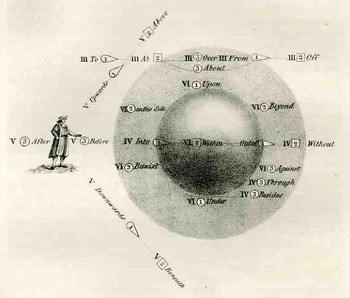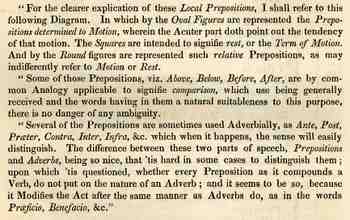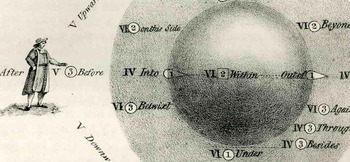JF Ptak Science Books LLC Post 197
I found this interesting image in David Booth's An Analytical Dictionary of the English Language in which the Words are Explained in the Order of their Natural Affinity, Independent of Alphabetical Arrangement...(2nd edition), printed in London in 1836. In it on page 187 he quotes a long section from an earlier work by Bishop Wilkins Essay Towards a Real Character and a Philosophical Language (1668) on the properties and classifications of prepositions. Wilks defines prepositions in the following way: "prepositions are such particles whose proper office sits to joyn Integral with Integral on the same side of the Copula signifying some respect of Cause, Place, Time or other circumstance wither Positively or Privately." Indeed! 
He then spends several pages looking at the combinations of prepositions, distributed into six classes. The illustration below is meant to illustrate classes 3 through 6: the third containing the combinations "doth consist of such as respect to Space, in general"; the fourth "in respect to Space, with a particular restriction to the notion of containing, being absolutely determined to Motion; fifth, "doth contain such Prepositions as relate to the Imaginary parts of a thing"; and sixth, "such Prepositions as are applied both to motion and rest, relating to the situation of some third thing spoke of...."
And so on, and of course it all makes sense in ways that I’ve not about in many years—but I’m just so attracted by the language and the many nearnesses to some very big ideas in physics, and the great and distinctive beauty of the illustrative diagram that I just needed to pass this along before it dipped away forever into the shadows. 




Comments